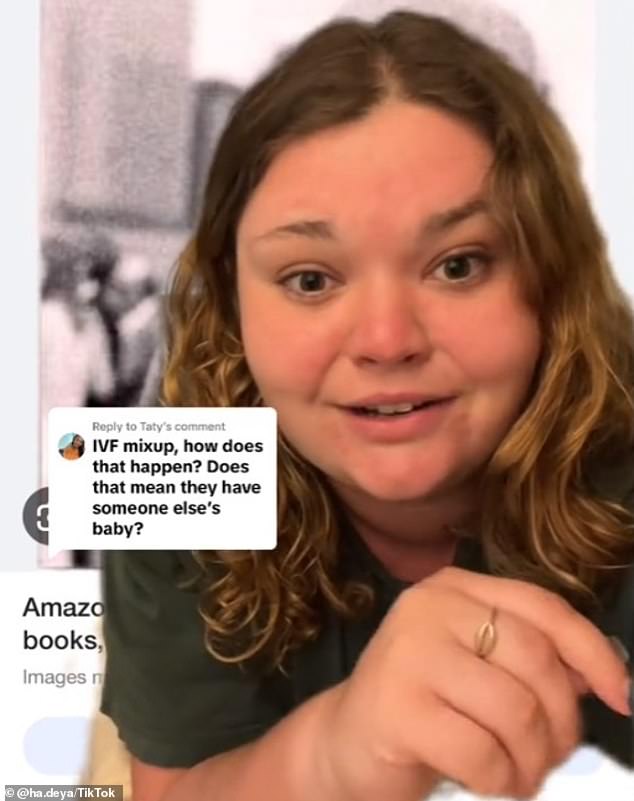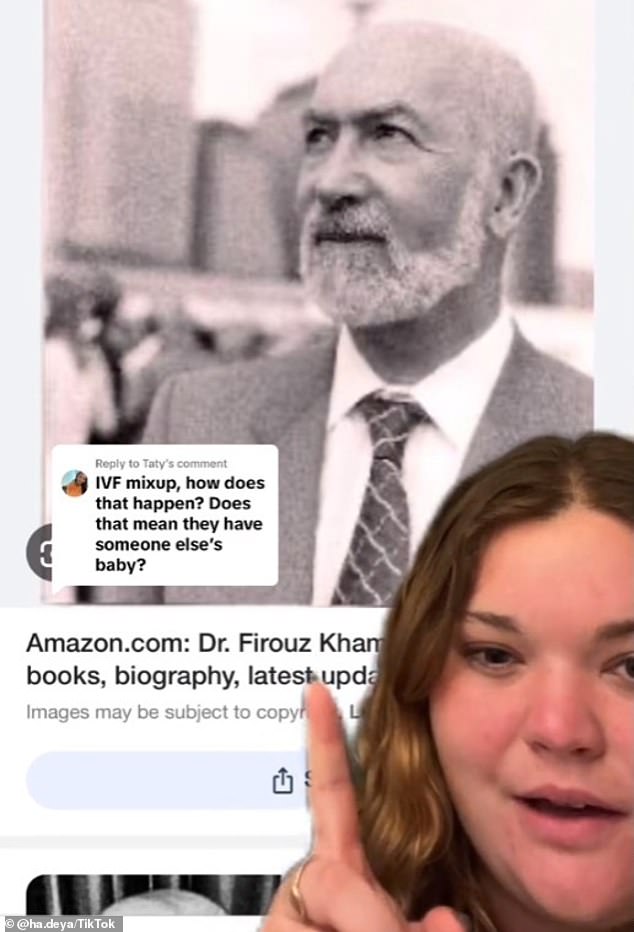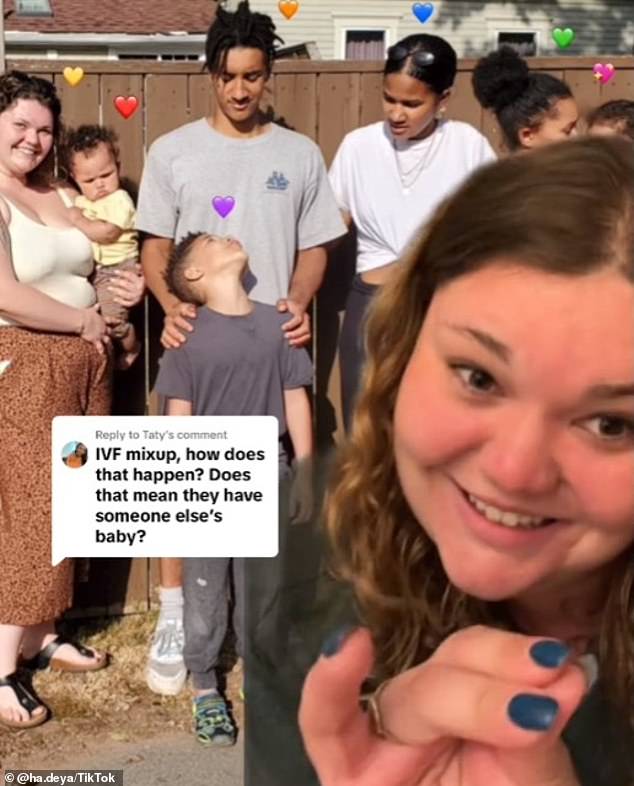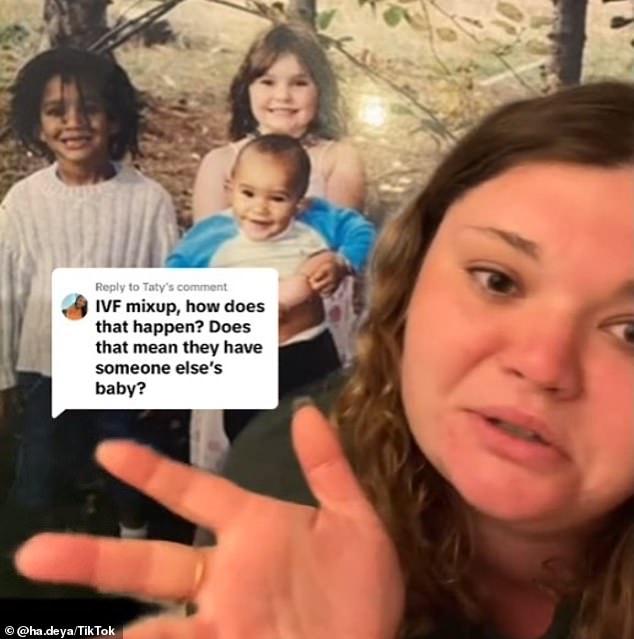I am a white woman, born into a mixed family due to IVF mix-up – my childhood was a lie
A white woman in Canada has revealed how an IVF failure in the 1990s left her an outcast in her blended family.
Hadeya Okeafor’s mother is white and her father is black. Her whole life she was told she was “pink like Mom” and her siblings were “brown like Dad.”
She did not question the difference growing up and felt as loved by her family as she was by her siblings, even when she visited cousins in Ghana.
She said: ‘You know, just like with dogs, you can have a white dog and a black dog in the same litter.
‘They finally told me around the 11th or 12th.’
Instead of her father’s sperm, the egg was fertilized, but with sperm from a white, brown stranger.
Mrs Okeafor visited Ghana with her family to visit cousins there. She is pictured here with one of her cousins

Hadeya Okeafor described in a new TikTok the IVF mix-up that left her black father’s sperm not used to fertilize her white mother’s egg, leaving her looking very different from her siblings
When her parents confronted the Toronto clinic They thought this was the latest in a series of similar mistakes. They were told it would take up to a year for Hadeya to darken her skin.
When it became clear that Dr. Khamsi had made a mistake, Ms. Okeafor’s mother filed a lawsuit against the practice and won.
In vitro fertilization uses eggs and sperm from a partner or a donor.
It is a process in which eggs from the woman’s ovaries are fertilized outside the uterus using sperm samples and implanted into the woman’s uterus.
Doctors perform approximately 4,000 IVF cycles each year in the US and more than 2 million worldwide.
While it is difficult to give an exact number, it is believed that such mistakes are rare. However, exact figures are difficult to give and could be higher than previously thought.
Errors and accidents are often not reported in the sector, which is largely self checked.
In one of the few studies of IVF errors, researchers found that Boston IVF, a large chain of fertility clinics, reported errors in 0.23 percentor about one in 400 cases.

Dr. Firouz Khamsi of the Toronto Fertility Institute fertilized the egg with sperm from a white, brunette man

Ms Okeafor is pictured with her siblings. She said the confusion never affected her relationship with her siblings, which remains strong to this day.

She is pictured here again with some of her siblings. She first became aware of the confusion when she was about 12, but said she let it slide and chose to love her family and her place in it for who they are
The male donor in Mrs. Okeafor’s case was a tall, white man with brown hair.
“When my parents had a meeting to talk to Dr. Khamsi, he simply said, you have to be grateful for what you have, you have a beautiful family, you got what you wanted. Take me to court if you want, but that’s what insurance is for.”
Dr. Firouz Khamsi owned the Toronto Fertility Institute, which he promoted as Canada’s first privately owned fertility clinic since 1984.
He had had problems with staff in the past. Despite a disciplinary committee ultimately finding him to be in compliance with the standards of care, one of his patients had become dissatisfied with his treatment of patients and the fact that he had not explained that IVF was not always successful. In fact, the success rate at that time was less than 10 percent.
She complained about him in 1994 and an independent specialist concluded that Dr. Khamsi’s care was deficient in terms of his history and physical examination, the tests on which he based his diagnosis, his records of conversations with the patient, and the emotional support provided to the patient.
Ms Okeafor hasn’t let the IVF mistake define her life or her relationship with her family, which has always been strong. She shared photos of her siblings and father in a new TikTok video, including shots of them all together and very close.
